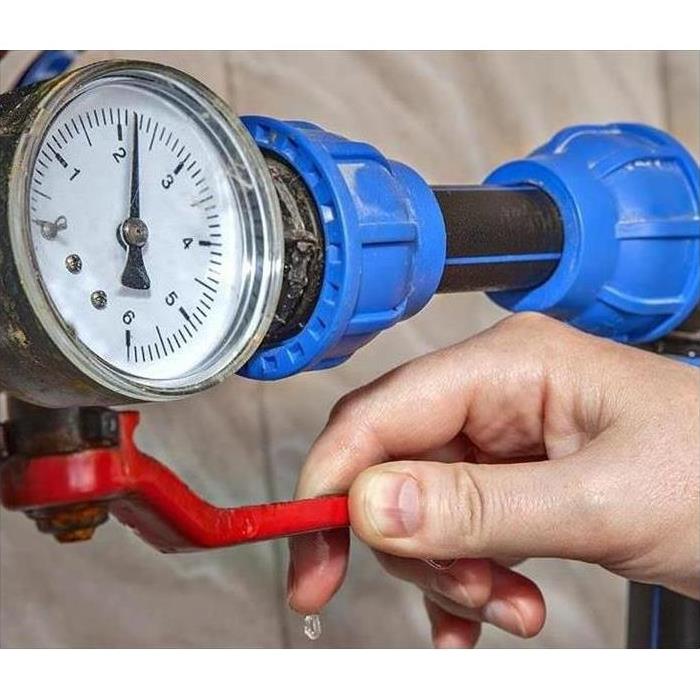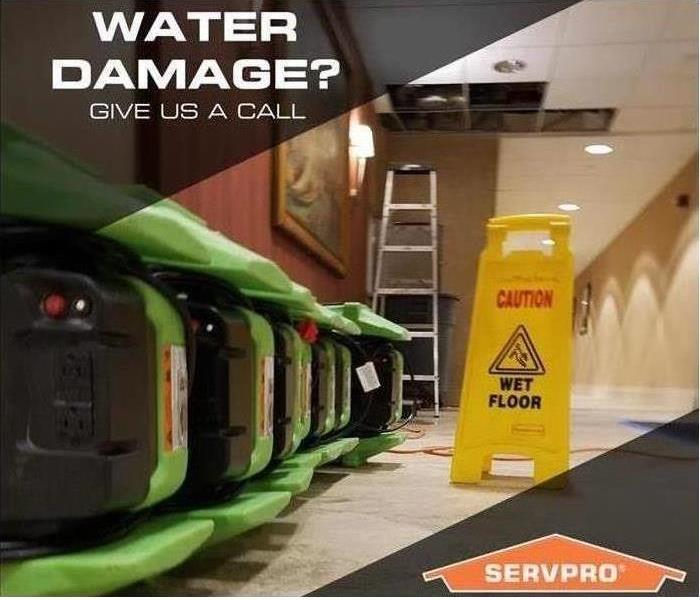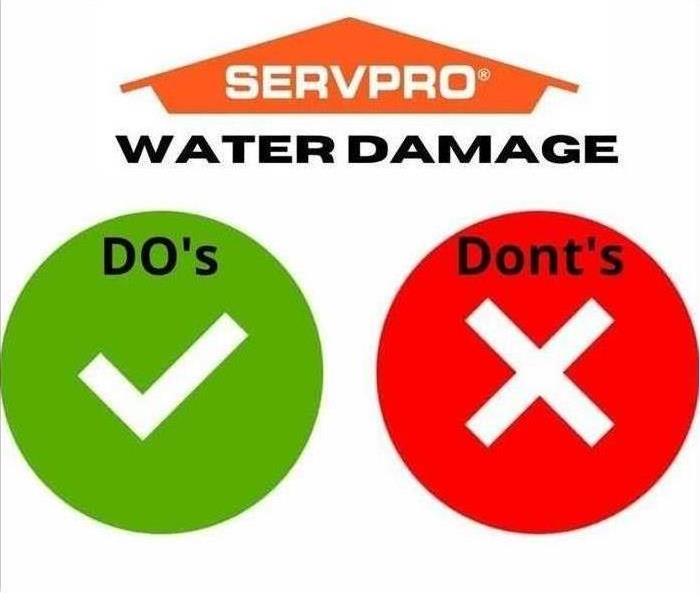Recent Water Damage Posts
The 3 Types of Water Damages You Need to Know to Protect Your Home!
2/21/2025 (Permalink)
Being able to distinguish the type of water loss you are experiencing can help keep you and your family safe from hazardous contaminants and potential illness. And knowing which category your water damage is in gives you the insight you need on how to handle the damage until professionals arrive.
The three categories of a water loss are based upon the Institute of Inspection, Cleaning, and Restoration Certification(ANSI/IICRC S500). To start, the IICRC S500 considers both the originating source and what materials the water makes contact with to determine the range of contamination in water. The extent of the contamination in the water helps determine the category of the water loss.
The water originates from a sanitary water source such as broken water supply lines; appliance malfunctions involving water-supply lines; and melting ice or snow. However, a category 1 water loss may go up to a Category 2 or 3 based on the general cleanliness of the home, or if it passed through building materials, or contains an odor.
- Category 2: Contaminated Water
The water originates from sources such as a discharge from dishwashers or washing machines; overflows from washing machines; overflows from toilet bowls with urine but no feces; and broken aquariums. This water contains significant contamination and has the potential to cause sickness if contacted or consumed by humans.
- Category 3: Hazardous Water
The water is grossly contaminated and can contain toxigenic or other harmful agents. Examples of a category 3 water loss include sewage; toilet backflows; wind-driven rain; and flooding. For this type of water loss, you definitely want to wait for a professional to arrive as it is extremely dangerous to try to handle it on your own.
After you figure out which category you’re dealing with, follow these steps on What to Do (and Not to Do) During a Water Damage.
For more information or help navigating a water damage, reach out now and we would love to help you!
What To Do (and Not to Do) During a Water Damage
12/22/2023 (Permalink)
1.What to Do (and Not to Do) During a Water Damage
Do you know what you would do if you found yourself standing in 3 inches of water in your living room? Well, don’t panic! First, to determine how to handle this situation, knowing what type of water you're dealing with is crucial.
The easiest way to look at it would be clean water vs. contaminated water.
Clean water can come from multiple sources such as toilet supply lines, dishwasher supply lines, an ice maker line to the fridge, or a hot or cold water supply line from your sink or shower. Essentially any source where the water does not encounter contaminates.
Contaminated water can come from a toilet overflow, roof leaks, slab leaks, or flood water. Essentially any source where the water encounters contaminates and potentially a high degree of waste.
When Handling Damage from Clean Water:
DO:
- Shut off the water source if possible
- Turn off circuit breakers for wet areas to keep yourself safe
- Remove as much water as you can by mopping it up
- Remove any valuables to a safe place to avoid damages (computers, paintings, documents, and any other sensitive materials)
DO NOT:
- Enter a room where you can experience electrical shock hazards
- Leave items such as books, newspapers, colored rugs, or other colored items on wet surfaces that may cause staining
When Handling Damage from Contaminated Water:
DO:
- Avoid contact with any sewage material or items affected by sewage
- Wash your hands if contact with contaminated items occur
DO NOT:
- Spread contaminated water by walking through wet areas
- Use household fans to try to dry the area
After handling the initial damage, reach out now and we would love to help you!
Leaving for Vacation?
12/19/2023 (Permalink)
 Turn the valve clockwise to shut off your water!
Turn the valve clockwise to shut off your water!
Ensure you come back to a proper home!
The holidays are coming up and maybe you’re dreading a conversation with your in-laws, or even worried about holiday surprises being spoiled. Whether it’s leaving the country or even driving away from your home for the weekend, one thing is for sure: you’ll be asking yourself, “Did I lock the door? Did I leave the stove on? Are the windows open?” These are all things to add to your checklist, but a common mistake is forgetting to turn off the main water.
You might be wondering, “Why would I need to turn off my main water supply?” Well, you wouldn’t want to come back to a flooded home! Now, it’s not as common as it may sound, but the possibility is still there. The smallest leaks can cause pipes or your supply lines to burst and start flooding your home. One single toilet supply line can produce up to 2-3 gallons of water per minute. In 24 hours that’s up to 2,000 to 3,000 gallons!
Turning off your main water supply
The main water supply is supplied by the city, and is normally located either in the front of the house or by the side. It can be identified by a red valve, along with a water meter or a regulator with a psi meter. Turn the valve clockwise and it’ll shut off your main water supply. Simple as that!
SERVPRO of Irvine 24 Hour Emergency Water Damage Service
12/13/2023 (Permalink)
SERVPRO of Irvine is available 24 hours a day for water emergencies, large or small. When you are dealing with water damage, immediate action is crucial. A delay of just a few hours can greatly increase the severity of the water damage.
We Answer the Phone Ready to Help!
Call Today – (949)474-7776
We understand that when you call us, you may be feeling confused, stressed, and vulnerable. You need an expert to guide you through this crisis. SERVPRO of Irvine has the specific water damage training and experience to help you through this tough time. We specialize in water damage restoration—in fact, it's the cornerstone of our business.
What to Expect:
When you call, we will ask several questions regarding your water damage emergency. These questions will help us determine what equipment and resources to bring, including how many trained SERVPRO professionals may be needed.
Our SERVPRO Representative will ask several questions:
- Your name and contact information
- Your insurance information (if applicable)
- The street address of the water-damaged home or business
- When did the flooding or water damage occur?
- What caused the water damage (if known)?
- Is there electricity available (on-site)?
- About SERVPRO of Irvine
About SERVPRO of Irvine
SERVPRO of Irvine specializes in the cleanup and restoration of residential and commercial property after a fire, smoke or water damage event. Our staff is highly trained in property damage restoration. From initial and ongoing training at SERVPRO’s corporate training facility to regular IICRC-industry certification, rest assured our staff is equipped with the knowledge to restore your property.



 24/7 Emergency Service
24/7 Emergency Service


